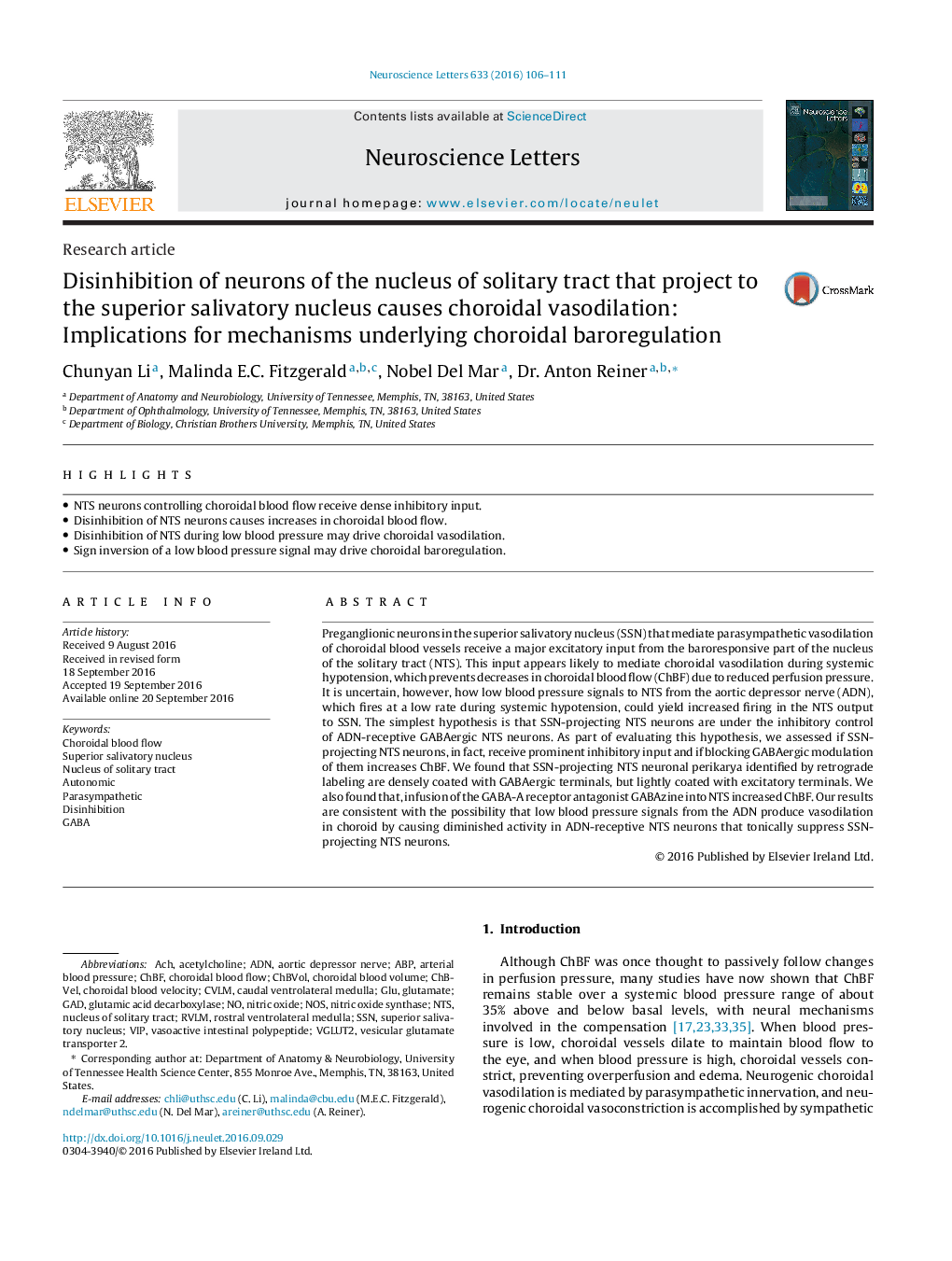| Article ID | Journal | Published Year | Pages | File Type |
|---|---|---|---|---|
| 6279012 | Neuroscience Letters | 2016 | 6 Pages |
Abstract
Preganglionic neurons in the superior salivatory nucleus (SSN) that mediate parasympathetic vasodilation of choroidal blood vessels receive a major excitatory input from the baroresponsive part of the nucleus of the solitary tract (NTS). This input appears likely to mediate choroidal vasodilation during systemic hypotension, which prevents decreases in choroidal blood flow (ChBF) due to reduced perfusion pressure. It is uncertain, however, how low blood pressure signals to NTS from the aortic depressor nerve (ADN), which fires at a low rate during systemic hypotension, could yield increased firing in the NTS output to SSN. The simplest hypothesis is that SSN-projecting NTS neurons are under the inhibitory control of ADN-receptive GABAergic NTS neurons. As part of evaluating this hypothesis, we assessed if SSN-projecting NTS neurons, in fact, receive prominent inhibitory input and if blocking GABAergic modulation of them increases ChBF. We found that SSN-projecting NTS neuronal perikarya identified by retrograde labeling are densely coated with GABAergic terminals, but lightly coated with excitatory terminals. We also found that, infusion of the GABA-A receptor antagonist GABAzine into NTS increased ChBF. Our results are consistent with the possibility that low blood pressure signals from the ADN produce vasodilation in choroid by causing diminished activity in ADN-receptive NTS neurons that tonically suppress SSN-projecting NTS neurons.
Related Topics
Life Sciences
Neuroscience
Neuroscience (General)
Authors
Chunyan Li, Malinda E.C. Fitzgerald, Nobel Del Mar, Dr. Reiner,
